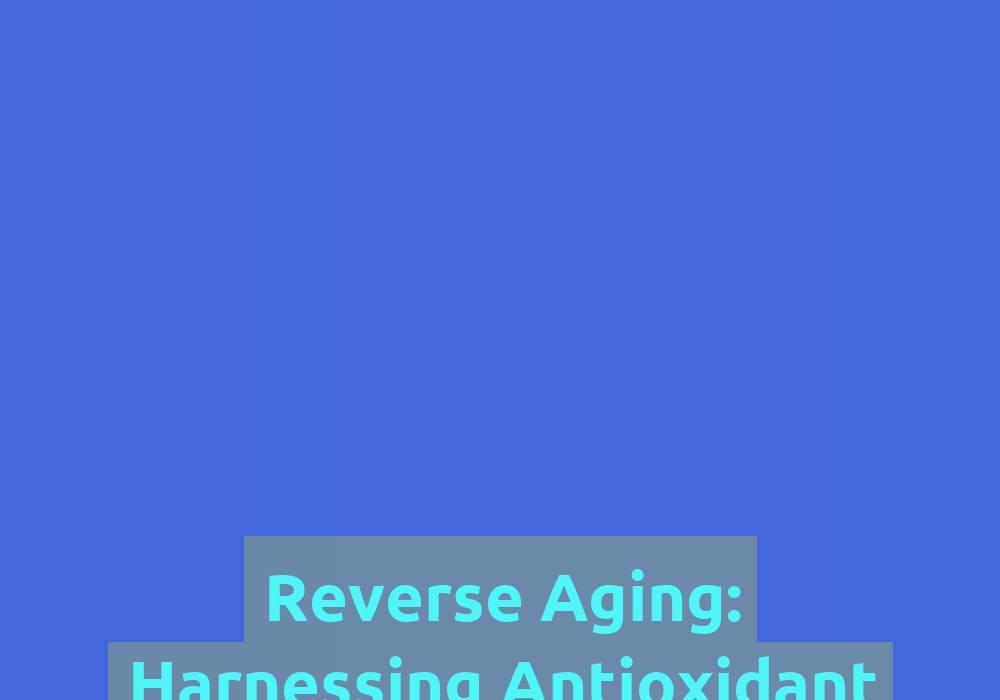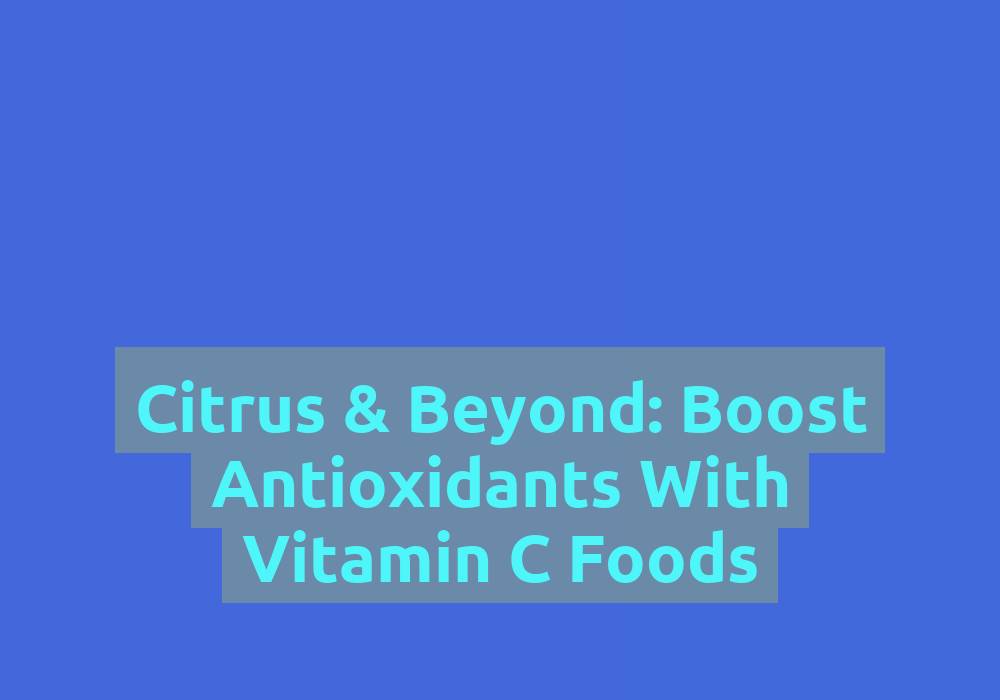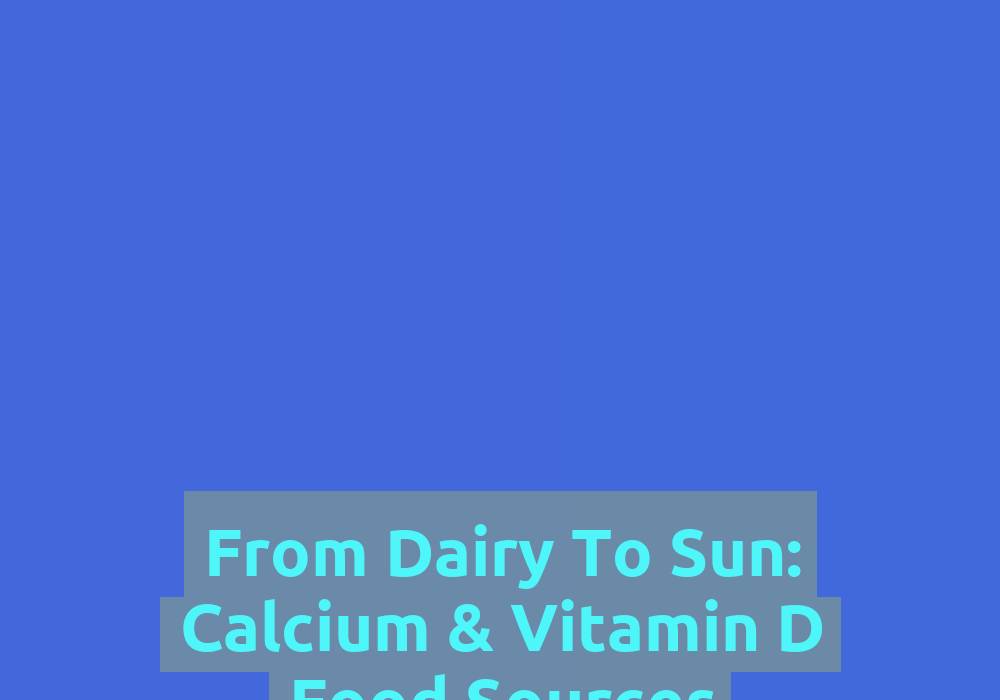Reverse Aging: Harnessing Antioxidant Foods

Aging is a natural process that we all go through. As we age, our bodies experience various changes, both internally and externally. While aging is inevitable, there are ways to slow down the process and promote a healthier, more youthful appearance. One effective method is by incorporating antioxidant-rich foods into our diet.
Antioxidants are substances that protect our cells from damage caused by free radicals. Free radicals are unstable molecules that can contribute to the aging process and the development of various diseases. By consuming foods rich in antioxidants, we can neutralize these harmful free radicals and minimize the damage they cause to our cells.
The Power of Antioxidant Foods
Antioxidant foods are abundant in vitamins, minerals, and phytochemicals that offer numerous health benefits. They not only help in reversing the signs of aging but also improve overall well-being. Let’s explore some of the most powerful antioxidant foods and their role in combating aging:
1. Berries
Berries, such as blueberries, strawberries, raspberries, and blackberries, are all packed with antioxidants. These tiny fruits are not only delicious but also rich in vitamin C, a key nutrient that supports collagen production. Collagen is essential for maintaining youthful and healthy-looking skin by providing structure and elasticity. Berries also contain anthocyanins, a type of antioxidant that helps protect against UV damage and reduces inflammation. Including a variety of berries in your diet ensures a wide range of antioxidant benefits.
2. Leafy Greens
Leafy greens, including spinach, kale, and Swiss chard, are excellent sources of antioxidants such as vitamins A, C, and E. These vitamins act as powerful antioxidants that help fight free radicals and protect our cells from damage. In addition to vitamins, leafy greens also provide essential minerals like zinc and selenium. These minerals aid in skin repair and promote a radiant complexion. Moreover, the high fiber content of these greens helps in detoxification, keeping the body free from harmful toxins that can accelerate the aging process. Including a generous portion of leafy greens in your daily meals can provide a significant antioxidant boost.
3. Nuts and Seeds
Nuts and seeds, such as almonds, walnuts, flaxseeds, and chia seeds, are not only rich in antioxidants but also packed with healthy fats. These foods contain vitamin E, a potent antioxidant that helps protect the skin from oxidative stress and keeps it moisturized. Additionally, the omega-3 fatty acids found in these nuts and seeds contribute to skin elasticity, reducing the appearance of fine lines and wrinkles. Incorporating a handful of nuts and seeds into your daily diet, either as a snack or as a topping for salads and cereals, can provide a significant antioxidant boost.
4. Colorful Vegetables
Brightly colored vegetables, including carrots, bell peppers, and tomatoes, are loaded with antioxidants like lycopene and beta-carotene. These antioxidants help repair damaged skin cells, improve skin texture, and protect against sun damage. Including a variety of colorful vegetables in your diet ensures a wide range of antioxidant benefits. Try to incorporate a mix of these vegetables in your meals, whether it’s in salads, stir-fries, or roasted dishes, to maximize your antioxidant intake.
5. Green Tea
Green tea is not only a refreshing beverage but also a potent source of antioxidants. It contains polyphenols, such as catechins, which have anti-inflammatory and anti-aging properties. Regular consumption of green tea helps reduce the risk of chronic diseases and promotes youthful skin by fighting free radicals. To incorporate green tea into your daily routine, you can enjoy a cup or two throughout the day. You can have it warm or cold, depending on your preference. Green tea not only hydrates but also provides a refreshing dose of antioxidants.
6. Dark Chocolate
Good news for chocolate lovers! Dark chocolate with a high percentage of cocoa is a superb source of antioxidants. It contains flavonoids that protect your skin against UV damage and increase blood flow, resulting in improved skin hydration and a radiant complexion. Remember to choose dark chocolate with at least 70% cocoa content to reap the maximum benefits. Indulging in a small piece of dark chocolate as an after-dinner dessert can satisfy your sweet tooth while providing a dose of skin-loving antioxidants.
Incorporating Antioxidant Foods Into Your Diet
Now that we understand the importance of antioxidant foods in reversing the aging process, let’s explore some practical ways to incorporate them into our daily diet:
1. Start Your Day with a Berry Blast
Add a handful of mixed berries to your morning cereal, oatmeal, or smoothie. This will provide you with an antioxidant boost to kickstart your day. You can also experiment with different berry combinations to keep your breakfast exciting and flavorful.
2. Build Colorful Salads
Experiment with different types of leafy greens, colorful vegetables, and antioxidant-rich nuts and seeds to create a vibrant and nutritious salad. Drizzle it with olive oil, another antioxidant-rich ingredient, for added health benefits. You can also add grilled chicken or tofu for a protein-packed meal.
3. Snack Smart
Replace unhealthy snacks with a handful of nuts, such as almonds or walnuts, for a satisfying and antioxidant-packed snack. You can also pair them with a piece of dark chocolate for a guilt-free indulgence. Keep small containers filled with nuts and dark chocolate in your pantry or desk drawer for easy access to these healthy treats.
4. Sip on Green Tea
Enjoy a cup or two of green tea throughout the day. You can have it warm or cold, depending on your preference. Green tea not only hydrates but also provides a refreshing dose of antioxidants. To add some flavor, you can infuse your green tea with lemon or mint leaves.
5. Indulge in Dark Chocolate
Treat yourself to a small piece of dark chocolate as an after-dinner dessert. Not only will it satisfy your sweet tooth, but it will also provide you with a dose of skin-loving antioxidants. Remember to choose dark chocolate with at least 70% cocoa content to maximize the health benefits.
Conclusion
By harnessing the power of antioxidant foods, we can effectively slow down the aging process and promote a youthful appearance. Incorporating berries, leafy greens, nuts and seeds, colorful vegetables, green tea, and dark chocolate into our daily diet can provide us with a wide range of antioxidants that combat free radicals and protect our cells from damage. So, start making these delicious and nutrient-packed foods a regular part of your meals and enjoy the benefits of reverse aging. Remember, a healthy and youthful glow starts from within!
Note: This article is written in markdown format for easy readability and formatting purposes.
English
FAQ
Q: What are antioxidants?
A: Antioxidants are substances that protect our cells from damage caused by free radicals. They neutralize these harmful molecules and minimize the damage they cause to our cells.
Q: How can antioxidant foods help reverse aging?
A: Antioxidant foods contain vitamins, minerals, and phytochemicals that offer numerous health benefits. They help fight free radicals, repair damaged skin cells, improve skin texture, and protect against sun damage, resulting in a more youthful appearance.
Q: What are some examples of antioxidant-rich foods?
A: Some examples of antioxidant-rich foods include berries (blueberries, strawberries, raspberries, blackberries), leafy greens (spinach, kale, Swiss chard), nuts and seeds (almonds, walnuts, flaxseeds, chia seeds), colorful vegetables (carrots, bell peppers, tomatoes), green tea, and dark chocolate.
Q: How can I incorporate antioxidant foods into my diet?
A: You can start your day with a berry blast by adding mixed berries to your cereal, oatmeal, or smoothie. Build colorful salads with leafy greens, colorful vegetables, and nuts/seeds. Snack on nuts and pair them with a piece of dark chocolate. Sip on green tea throughout the day. And indulge in a small piece of dark chocolate as an after-dinner dessert.

